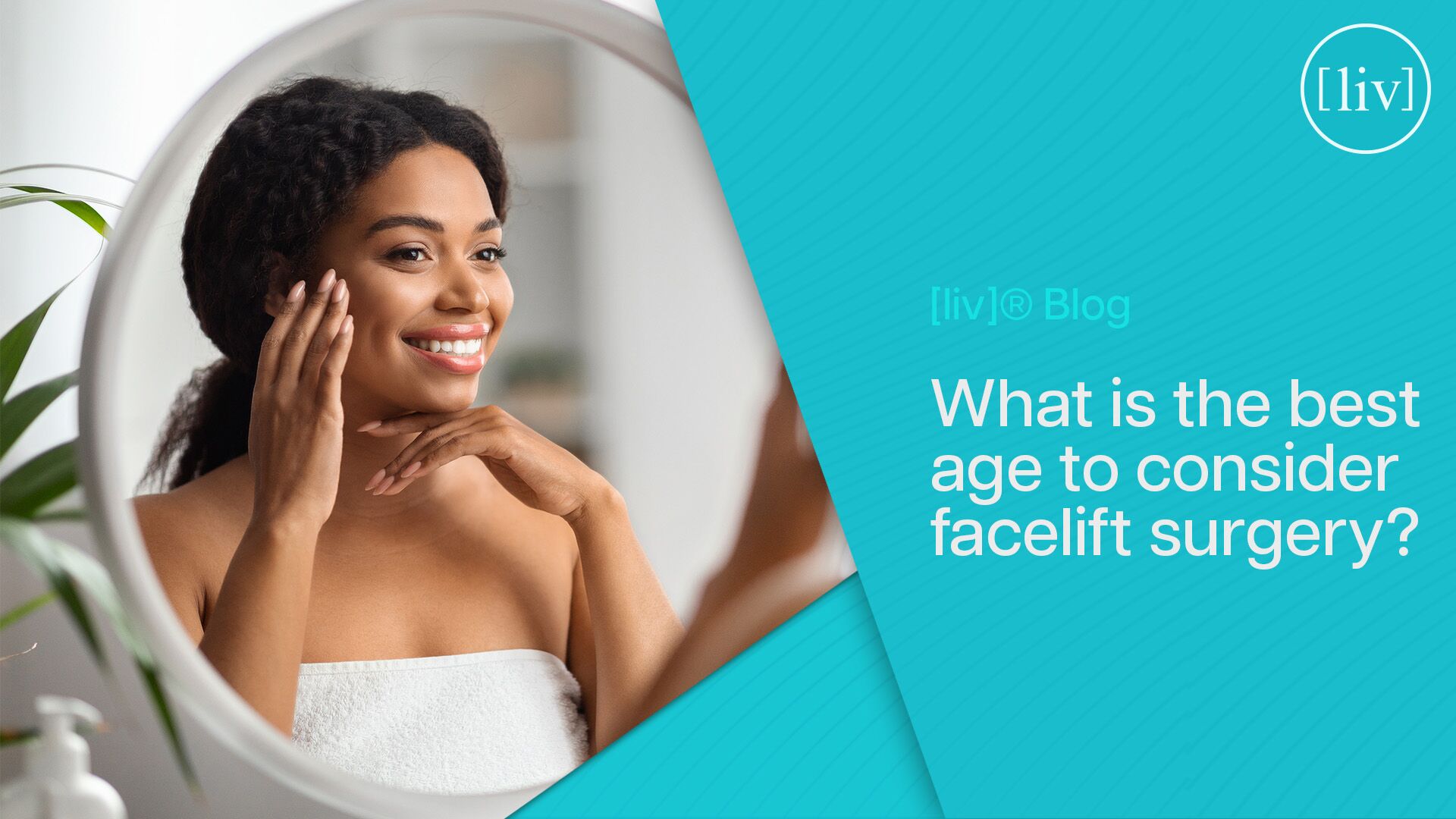Celebrate Mother's Day with Dr. Andrew Ress at [liv]
May 08, 2025
Shine Bright This Holiday Season: Unveil Your Best Self!
December 18, 2024

Determining the best age for facelift surgery is not without merit, given that this type of surgery can boost your confidence and diminish any signs of aging you have.
This type of surgery used to be reserved only for the elite – individuals who could afford it, but thankfully, that is no longer the case. If you are considering getting it done, you should know the best results tend to happen to adults in their 40s, but there are a few factors more important than actual age, and those are – genetic and your anatomy.
The thing is, surgery such as a facelift is a type of procedure you can benefit from at any age, but it is important to analyze your anatomy beforehand and allow your surgeon to determine what is the best technique that will leave you with flawless and long-lasting results.
To determine if you are a good candidate for facelift surgery, there are a few factors to consider, having in mind that this is a very personal decision to make.
Sometimes it can be very difficult to advise people in terms of the best age for facelift surgery, due to the very different life experiences some people can have. It can be smoking and dieting for some people, excessive sun exposure for others, or simply the genetic traits of your skin that naturally affect your skin condition.
However, if you happen to be over forty, then you are probably a perfect candidate, due to the fact you still have sufficient skin elasticity to achieve optimum results. Of course, that doesn’t mean that a facelift can’t be done for patients in their sixties or seventies, and even older if they are in good health.
This is important because even though facelift procedures are easier to withhold thanks to surgical innovation, it still is an invasive procedure, which is why you might address any health concerns you have first.
Usually, a typical facelift lasts 7-10 years, which is why the approximate age of 40+ is so great for getting your first facelift – the second one (the refresher) will follow when you’re in your sixties.
However, the facelift results can last for multiple years, but it all really depends on the patient. There are several factors aside from age that are responsible for determining how long will the effects of a facelift last, them being genetics, skin elasticity, health, and surgical techniques used.
We already said the best age for a facelift is 40+, and there is one more strong reason for it. Patients who undergo a facelift in their mid-40s experience longer-lasting effects and require fewer revisions and “refresher” surgeries afterward.
The reason for this is that at this age you are still able to retain youth, not try and recapture it later. This is because, as time passes by, you obtain permanent lines and creases on your cheeks, forehead, eyelids, and the corners of your mouth. If you undergo a facelift during the earlier stages of skin aging, you can boost the overall effect and retain a youthful appearance for many years to come.
For patients who want to treat the signs of aging appearing on the lower third of the face, the mini facelift procedure is a perfect option.
This is perfect for everyone who wants to address the minor signs of aging – wrinkles and sagging on the lower parts of the face, but not go overboard. This procedure refreshes your natural appearance and has a shorter recovery time, and it also garners the best results if you’re under 50.
There are a few other facelift procedures that can be good options, depending on your age.
For instance, a facelift procedure known as the deep plane lift is something that provides dramatic results in terms of wrinkles and sagging skin. It involves full lifting and fully rejuvenates your skin. The best age to get a facelift of this kind is usually over 60, and the results you obtain are a significantly rejuvenated jawline, cheeks, and chin.
The mid-facelift surgery is used to address moderate signs of aging occurring in the middle part of the face, and it involves lifting and repositioning that middle layer of the face over your cheekbones. This ultimately restores the youthful look of your cheeks and mouth, making you look vibrant once again. This procedure is perfect for patients over the age of 50 when sagging of the cheeks and nasolabial folds are more prominent.
As we already established, the best age for a facelift is around the age of 40, given that your skin is still young enough to withhold the procedure and heal well, but also because it has enough elasticity to sustain the procedure, and therefore provide the best optimum results.
Of course, 40 is an approximate number, but whatever age you decide to undergo facelift surgery, you need to manage your expectations beforehand and decide what you want for your surgery to achieve.
The best thing you can do is to schedule a consultation with your plastic surgeon, who will determine if you are a good candidate based on your age, genetics, and overall health, but also, answer all the questions you might have and explore alternative procedures that can provide you with similar results, without actual surgery.
Remember – facelifts aren’t a one-size fit scenario. They are based on individual factors such as your facial structure, not to mention it can be focused on different parts of your face depending on your goals and desires.
May 08, 2025
December 18, 2024
Copyright © Liv Plastic Surgery 2025. All Rights Reserved

Consultations are complimentary in person or virtual.
We love our out of town patients!
